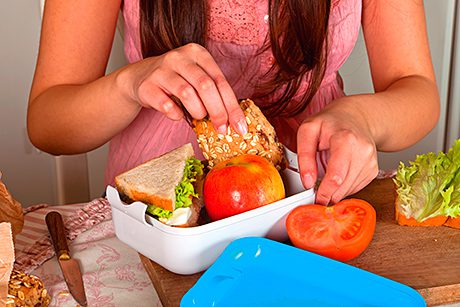The back to school period is important but grown-ups provide the majority of packed lunch sales opportunities, and lunchbox sales grow in cash-conscious times.

TRADITIONALLY August provides retailers in Scotland with a second new year – the start of the academic year.
The back-to-school rush still means that new school uniforms, gym kit, stationery items, bags, calculators and more will be sold to families and students heading into new school and college terms. But, while c-store and local retailers will often still stock the little stationery items that parents and pupils forget, the main back-to-school products are increasingly fought over by the supermarkets, deep discounters and high street stores.
Lunch, on the other hand, is a different matter. And as the main family holiday season comes to an end, the kids return to school and mums and dads head back to work, the contest to fill the nation’s lunchboxes is one in which local shops should, theoretically, be able to compete vigorously.
Let’s examine the trends. Scots and others in the UK are now in their fifth year of tough economic times that have included recognised periods of recession. Consumers have become more price-conscious and, according to some researchers, much more inclined to carefully plan purchases.
Eating out – at lunchtime and other times – has suffered very substantially. In contrast, packed lunches, food-to-go meal deals and the big night in have all been booming. All in all there has been a significant shift from catering to food retail.
At the same time c-stores have been doing pretty well, all things considered, as consumers faced with high fuel prices and constrained monthly budgets have become more inclined to shop more frequently and to shop locally – often for quite substantial top-up shopping lists as they bid to control costs and wastage.
So more than ever before the back-to-school and back-to-work season should present local shops with real opportunities to cash in on consumer buying for packed-lunch items.
So how can the local retailer gain the maximum benefit? As ever the first step is to understand his or her own specific market.
The back-to-school effect is important certainly but its particular effects on an individual store will depend on how many families with school-age kids are in the local area.
And overall it’s important to remember that adult packed lunches are hugely important too.
This time last year we asked leading research organisation Kantar Worldpanel to give us some of the figures and the results were intriguing.
While lunchbox eating occasions were increasing in number and provided real sales opportunities the lunchbox trend was more marked south of the border than in Scotland. And while packed lunches for working adults accounted for almost two out of every three of the 4.2bn lunchbox eating occasions across Great Britain in Scotland it was nearly four in five.
What should you stock if you’re thinking inside the box? Kantar found in 2012 that sandwiches were the most frequently included items in lunchbox meals, though that trend was a little less marked in Scotland.
Pieces of fruit were the next most frequently used lunchbox items.
Scottish packed lunches were more likely than those south of the border to include items such as soft drinks, rolls and crisps.
With planned shopping and packed lunches playing a more significant roll in consumers lives, there’s a strong argument that c-store operators should at least experiment with special packed-lunch bays featuring things like multipacks of single-serve juice, fruit, cold meat, rolls, soft drinks and snacks.
August could be a good time to give it a go.



















